How to Move to Mexico the best tips for a new life
When we first took early retirement we thought that moving to Mexico was a good idea and one of the best places we could move to with a low cost of living, and easy to reach for our family members and friends. Being foodies we loved Mexican food and as far as my husband was concerned the hotter the better- as in more chiles please.
Moving to Mexico from Canada or the USA has become an increasingly attractive option for many North Americans and us Canadians, seeking a change of pace, a lower cost of living, or simply a more fulfilling life abroad. From its rich culture and stunning landscapes to its growing expat communities and favorable climate, Mexico offers a wide range of benefits. Whether you’re planning a temporary stay, a retirement, or a permanent relocation, this guide will walk you through the necessary steps, legalities, and practical considerations for a smooth transition.
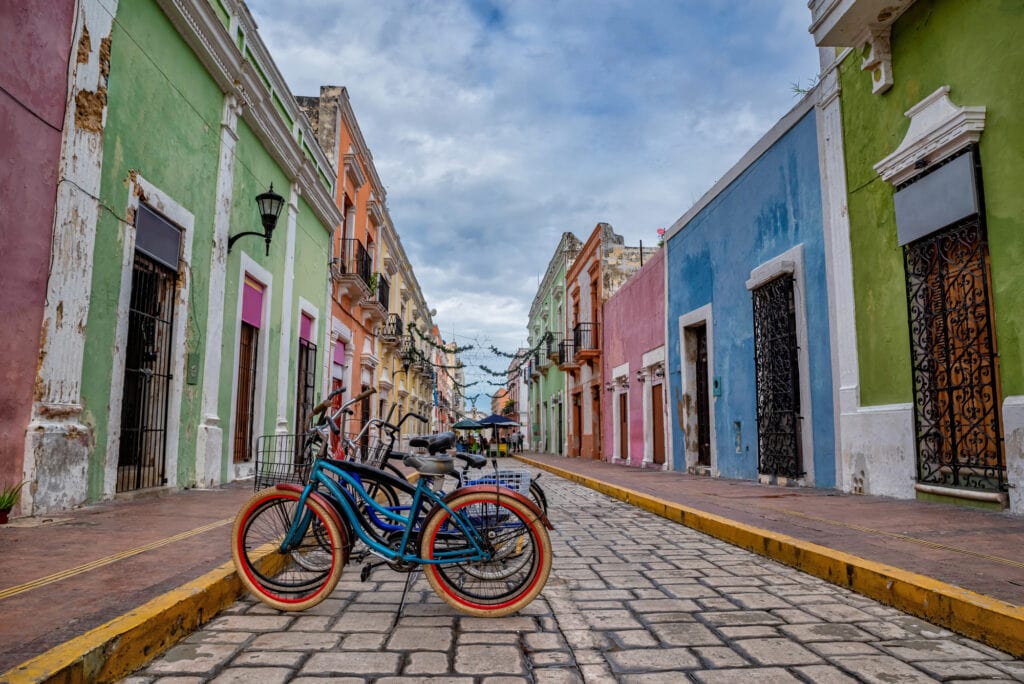
- How to Move to Mexico the best tips for a new life
- Why Move to Mexico?
- Choosing the Right Location
- Visa Requirements for Americans Moving to Mexico
- Housing and Real Estate
- Healthcare in Mexico
- Cost of Living
- Employment Opportunities and Starting a Business
- Education System
- Cultural Integration and Language
- Cultural Norms
- Fiestas and Holidays
- Practical Considerations: Banking, Taxes, and Legal Issues
- Preparing for the Move
- Settling In: Building a New Life in Mexico
Xyuandbeyond is reader-supported. When you buy through links on our site, we may earn an affiliate commission. You can read my privacy policy here.
Why Move to Mexico?
Cultural Appeal
Mexico has a rich cultural heritage, great food, vibrant cities, and for us affordable healthcare and possible the ability to rent a beach house on the water. This makes it an attractive destination for many of us from North America. From ancient Mayan ruins and UNESCO World Heritage sites tto colonial cities, pristine beaches, and mountainous retreats, Mexico offers something for everyone. The country is known for its warmth, hospitality, and the spirit of community, making it a great place for those seeking a welcoming atmosphere.

Cost of Living
One of the main reasons Americans move to Mexico is the significantly lower cost of living. Housing, groceries, transportation, and healthcare can all be more affordable compared to many parts of the U.S. This makes Mexico particularly appealing to retirees and remote workers looking to stretch their income further.
Proximity to the U.S. and Canada
For Americans, Mexico’s proximity to the U.S. is a major advantage. Direct flights between major cities are frequent, and the option to drive across the border can be convenient for those moving from southern states like Texas, California, and Arizona. This accessibility makes it easier to visit family and friends or even maintain ties to work or business.
Climate
Mexico’s climate varies greatly depending on the region, but generally, it offers warm weather year-round. Coastal areas offer tropical climates, while central highland cities like Mexico City, Guadalajara, and San Miguel de Allende enjoy a milder, spring-like climate. The ability to choose the type of environment you prefer is another reason why Mexico is a top choice for expats.

Choosing the Right Location
Choosing where to live in Mexico depends on your personal preferences, lifestyle, and priorities. Mexico is vast and offers a wide range of living environments, from bustling urban areas to tranquil beach towns and rural villages. Below are some of the most popular regions for American expats:
Mexico City
As the capital and largest city in Mexico, Mexico City offers a dynamic urban lifestyle with world-class dining, arts, and culture. It’s a city for those who enjoy a fast-paced, cosmopolitan lifestyle. However, the cost of living is higher here than in other parts of the country.
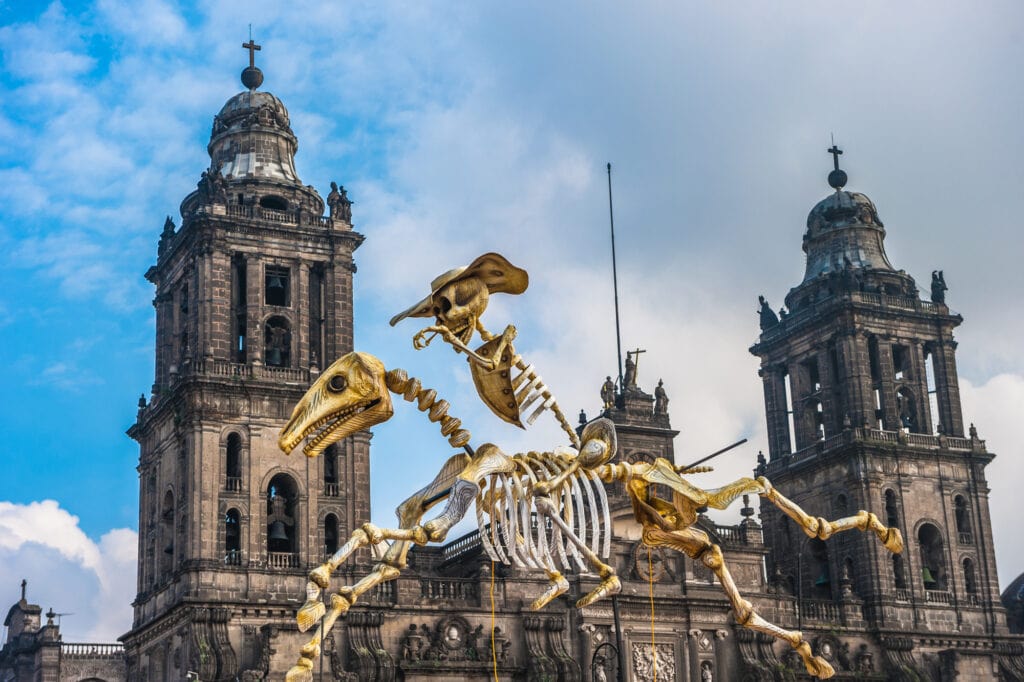
Guadalajara
Located in the state of Jalisco, Guadalajara is a vibrant city known for its culture, music, and arts scene. It’s slightly less hectic than Mexico City and offers a lower cost of living with plenty of amenities. It’s also known as a tech hub, which makes it appealing to digital nomads.
Puerto Vallarta
For those looking to live by the ocean, Puerto Vallarta is a popular expat destination on the Pacific coast. With beautiful beaches, a large expat community, and a slower pace of life, it’s a great spot for retirees or anyone seeking a more relaxed atmosphere.

San Miguel de Allende
Known for its beautiful colonial architecture and artistic vibe, San Miguel de Allende has a significant expat community. It’s a popular choice for retirees and offers a charming, small-town feel with cultural events and activities year-round.
The Yucatan Peninsula (Merida, Playa del Carmen, Tulum)
The Yucatán Peninsula is famous for its beaches and Mayan ruins. Merida is a cultural gem with historic homes, a fabulous market and a lower cost of living, while Playa del Carmen and Tulum are known for their trendy beach lifestyles, attracting both tourists and expats alike. The Yucatan is considered one of the safest in all of Mexico and it was for this reason we chose the area around Chelem and Chuburna. What we did not anticipate was the fact that the Yucatan area is often one of the hottest places in the world and even very early in the morning with a cup of coffee my eyelashes were sweating.
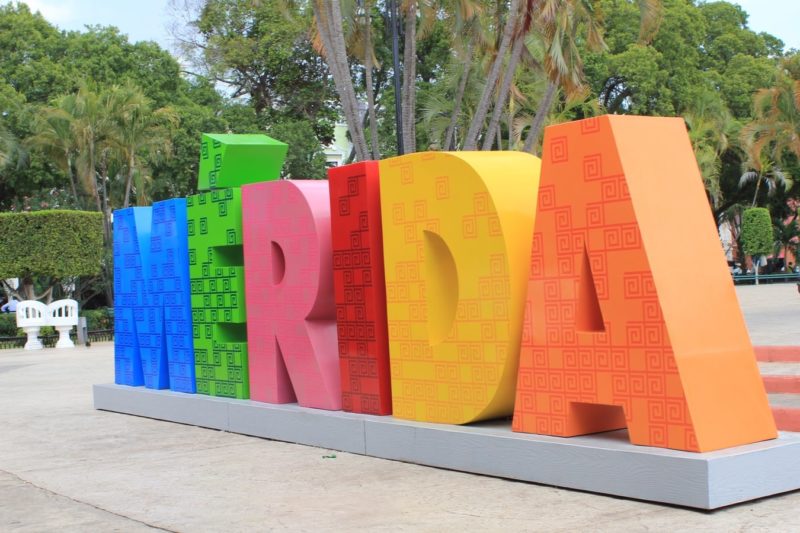
Baja California (Tijuana, Ensenada, La Paz)
The Baja Peninsula is popular with Americans because of its proximity to California. Tijuana and Ensenada are just across the border, while La Paz offers a laid-back coastal life with beautiful beaches and outdoor activities.
Visa Requirements for Americans Moving to Mexico
If you’re planning to stay in Mexico for an extended period, understanding the visa requirements is crucial. Mexico offers several visa options depending on the purpose and length of your stay.
Tourist Visa (FMM – Forma Migratoria Múltiple)
For short-term stays up to 180 days, U.S. citizens don’t need a visa to enter Mexico. Upon arrival, you will be given a tourist card (FMM), which allows you to stay in the country for up to six months. However, this visa does not permit you to work, and it’s not intended for long-term stays or residency.

Temporary Resident Visa (Residente Temporal)
For those who plan to stay in Mexico for longer than six months but less than four years, a Temporary Resident Visa is the best option. This visa is renewable annually for up to four years. You’ll need to apply at a Mexican consulate in the U.S. before entering the country.
The requirements for a Temporary Resident Visa include proof of financial stability, typically through bank statements or proof of a steady income, such as a pension or remote work salary. As of 2023, the financial requirement is generally around $2,500 USD in monthly income or $40,000 USD in savings. You can also apply for this visa if you are working for a Mexican company or studying in Mexico.
Permanent Resident Visa (Residente Permanente)
The Permanent Residents Visa is designed for individuals looking to live in Mexico indefinitely. Unlike the Temporary Resident Visa, it doesn’t require annual renewals. You can apply for this visa directly if you meet certain criteria, such as having close family ties in Mexico, being of retirement age, or having already held a Temporary Resident Visa for four years.
The financial requirements for a Permanent Residency Visa are typically higher than for the Temporary Visa, usually around $4,300 USD per month in income or $170,000 USD in savings. This visa also allows you to work in Mexico.
Work Visa
If you are offered a job by a Mexican employer, they must apply for a work permit on your behalf. Once the permit is approved, you can apply for a Temporary Resident Visa with permission to work.
Student Visa
If you plan to study in Mexico, you’ll need to apply for a Student Visa. The process involves providing proof of enrollment in a recognized Mexican educational institution and evidence of sufficient funds to support yourself during your studies.
Housing and Real Estate
When it comes to finding housing in Mexico, you have the option to rent or buy property. Both choices have pros and cons, depending on your financial situation and long-term goals.
Renting a Home in Mexico
For those just starting out, renting is the most popular and practical choice. Renting allows you to get a feel for a city before committing to buying property, and it gives you flexibility. Rental prices vary significantly based on location, size, and amenities. One interesting way to see various areas of Mexico is to try housesitting. You can join a platform such as Housesit Mexico which covers many regions and will give you the opportunity to check out an area before committing yourself.
– Mexico City: $800 – $2,000 USD per month for a two-bedroom apartment in a central area.
– Guadalajara: $600 – $1,500 USD per month for a similar apartment.
– Beach towns (Puerto Vallarta, Playa del Carmen): $700 – $2,000 USD, depending on proximity to the ocean.
Most rental agreements require a deposit, the first month’s rent, and possibly a cosigner or proof of income. Furnished rentals are common in tourist areas, while unfurnished rentals are more common in cities.
We rented a house on the beach (front line) for around $800 US, but were told to make sure the lease was in Mexican pesos and it saved us a lot of money with the currency fluctuation. These days that property which had a pool and costs around $3500 US.
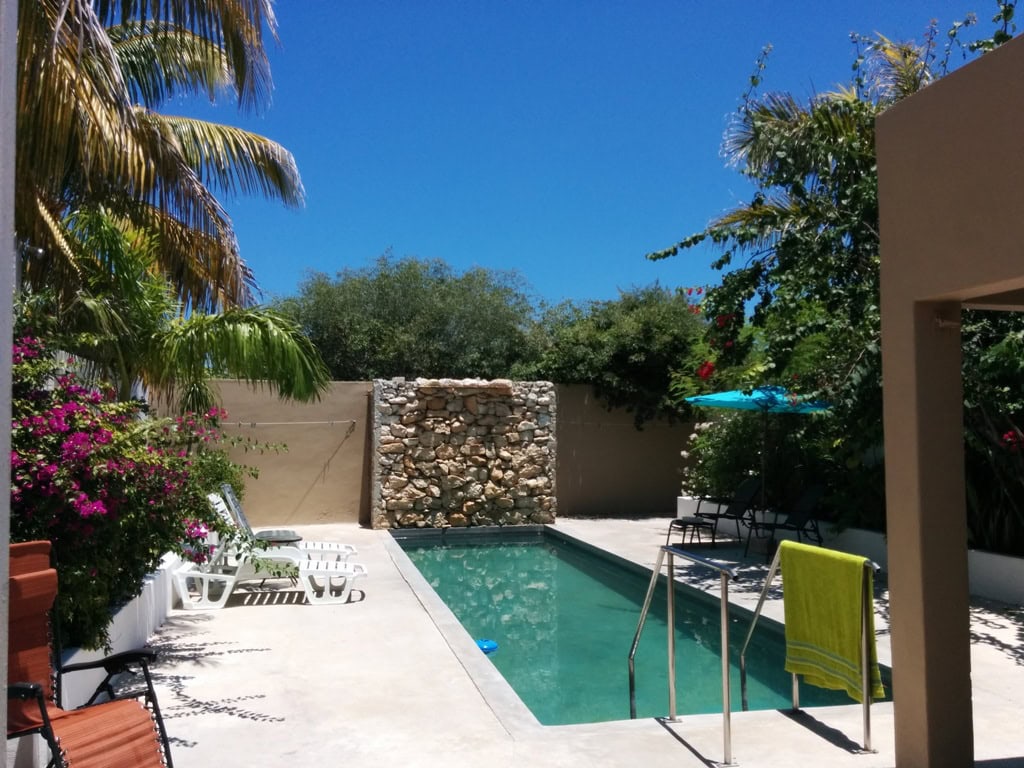
Buying Property in Mexico
Foreigners can legally own property in Mexico, although there are some restrictions near the coastline and borders. In these areas, foreigners must use a bank trust known as a “fideicomiso” to hold the title. This process is safe and commonly used by expats. Outside of these restricted zones, Americans can own property outright.
Property prices vary by region:
– Mexico City: $150,000 – $500,000+ USD for an apartment in a desirable neighborhood.
– San Miguel de Allende: $200,000 – $600,000+ USD for a home.
– Coastal areas (Puerto Vallarta, Tulum): $250,000 – $1,000,000 USD for beachfront property.
It’s important to hire a qualified real estate agent and a notary to assist with the property purchase process.
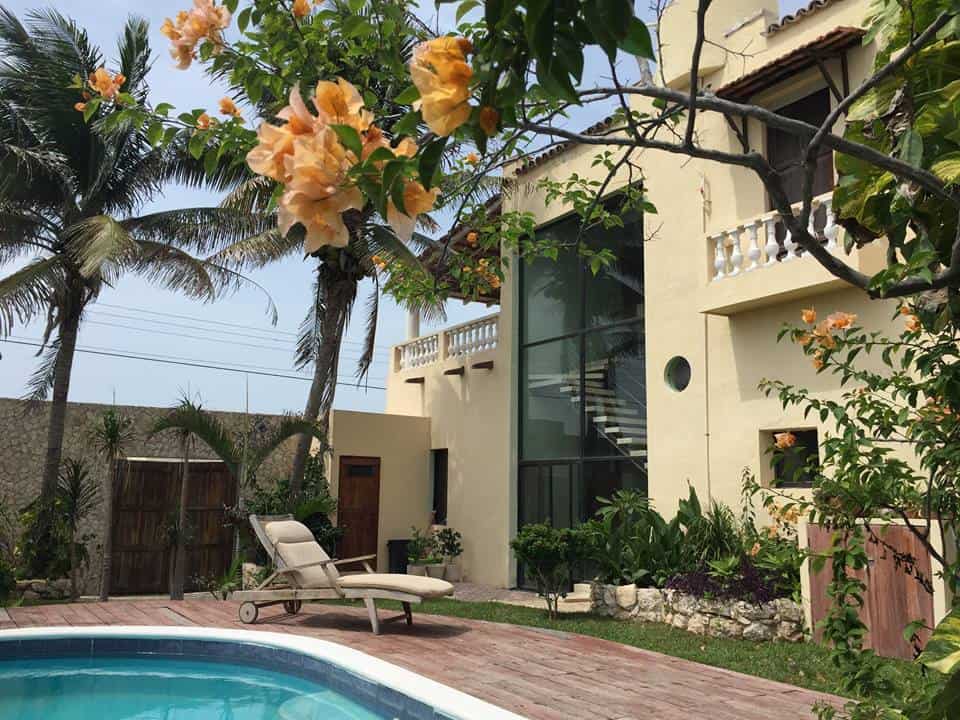
Healthcare in Mexico
Mexico offers excellent healthcare, often at a fraction of the cost in the U.S. The country has both a public healthcare system (IMSS) and a private healthcare sector. Many Americans find that private healthcare, while more expensive than the public system, is still affordable compared to U.S. standards and offers a high quality of care.
Public Healthcare (IMSS)
Mexico’s public healthcare system is available to both Mexican citizens and foreign residents. You can either enroll through employment or opt to pay for IMSS coverage independently. The system covers a range of services, but it may have longer wait times and fewer English-speaking doctors compared to private hospitals.
Private Healthcare
Many expats prefer to use private hospitals and doctors particularly in major cities and expat-heavy areas. Private healthcare is still far more affordable than in the U.S. For instance, a doctor’s visit might cost between $30 and $50 USD, while a full medical check-up may range from $100 to $300 USD.
Health Insurance
Many expats purchase private health insurance to cover more expensive procedures. Mexico offers several international health insurance plans that are designed for expats, as well as national plans that can be more affordable. Monthly premiums vary based on age, health status, and coverage options.
Medical Tourism
We did learn that many people come to Mexico for what is called Medical Tourism and even Dental Tourism as the cost of these are significantly lower than in North America. Many Americans travel to Mexico for treatments like dental procedures, cosmetic surgery, and elective surgeries, often saving 50-70% on medical expenses.
Mexico boasts modern hospitals and clinics, especially in border cities like Tijuana and popular tourist destinations like Cancun, Merida and Guadalajara. Many doctors and dentists are trained internationally, with some facilities offering English-speaking staff and state-of-the-art equipment, making it an attractive option for affordable, quality healthcare.My husband had his bridge replaced in Merida at a cost of $3500 US and his dentist in Canada had quoted $30,000 Canadian.
Cost of Living
Mexico’s cost of living is generally much lower than that of the United States. However, expenses can vary greatly depending on where you live and your lifestyle.

Housing
Rent for a two-bedroom apartment in Mexico can range from $400 to $2,000 per month, depending on the location. We found that many houses were unsuitable for renting in the Yucatan as American style properties were very expensive and could only be rented for 6-8 months out of the year. Because those of us from North America like our “luxuries” like several indoor bathrooms and swimming pools the rental market can be very expensive.
Utilities
Basic utilities (electricity, water, heating, cooling) typically cost around $50-$100 USD per month. Internet service is about $20-$40 USD per month.
Groceries
Shopping for local produce and goods is affordable. A monthly grocery budget can range from $200 to $400 USD, depending on your dietary preferences.
Transportation
Public transportation, including buses and metro systems in cities like Mexico City, is inexpensive, with fares around $0.50 USD per ride. Gasoline is more expensive, about $4-$5 USD per gallon.
Dining and Entertainment
A meal at an inexpensive restaurant costs around $5-$10 USD, while a three-course meal at a mid-range restaurant can be $20-$30 USD.

Employment Opportunities and Starting a Business
How can i work in Mexico? Many Americans moving to Mexico work remotely or start their own businesses. Mexico has a growing digital nomad scene, and internet connectivity is generally good in cities and tourist areas. Some expats find jobs teaching English or working in the tourism industry, though salaries tend to be lower than in the U.S.
Starting a Business
Mexico is open to foreign entrepreneurs, and the process to start a business is relatively straightforward. You’ll need to register your business, apply for the appropriate visa (typically a Temporary Resident Visa with permission to work), and meet any local licensing or regulatory requirements. Many expats or immigrants share their artistic skills or culinary skills at local Farmer’s markets started by expats.

Common businesses for expats include restaurants, hotels, tour companies, and real estate services. If you plan to hire local employees, you’ll also need to understand Mexico’s labor laws. Many new residents have simple businesses that only involved one person we met many residents who were hairdressers, barbers, in-home chefs, mechanics and so on as they could work independently serving the expat market.
Education System
If you’re moving to Mexico with children, understanding the education system is important. Mexico offers public, private, and international schools.

Public Schools
Public schools in Mexico are free to attend, but they may not offer the same level of resources or bilingual education that private or international schools provide. Public education is conducted in Spanish, which may be a challenge for non-Spanish-speaking children.
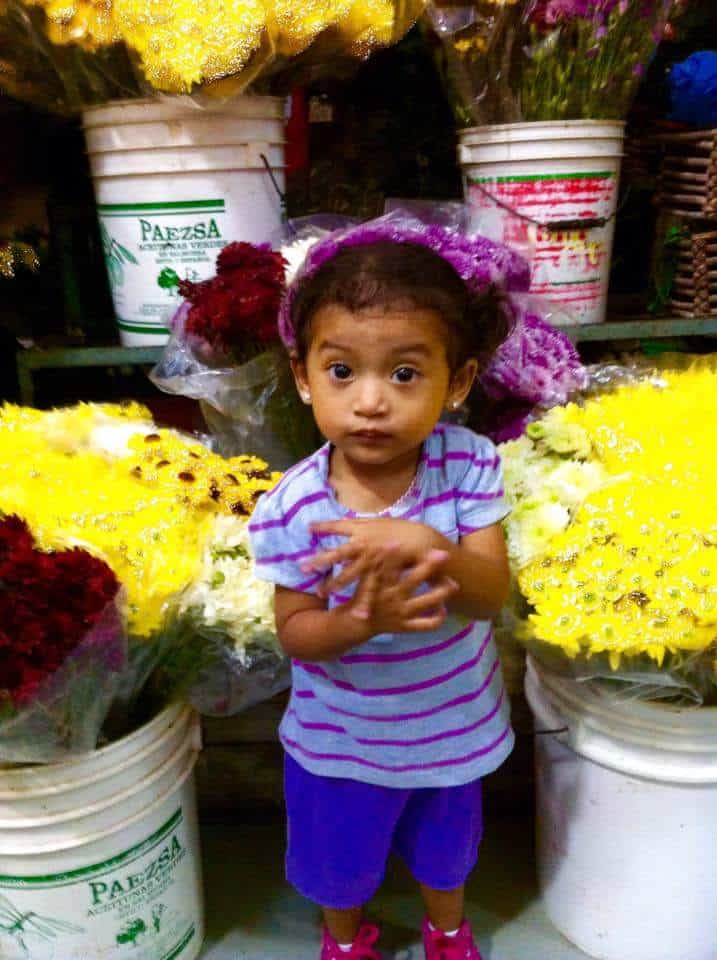
Private and International Schools
Many expats choose private or international schools, which often offer bilingual education (Spanish and English) and follow international curricula such as the International Baccalaureate (IB). Tuition fees for private schools can range from $5,000 to $15,000 USD per year.
Cultural Integration and Language
Learning Spanish
While it’s possible to get by with English in popular expat areas, learning Spanish will greatly enhance your experience. Speaking the local language will make it easier to integrate into the community, handle everyday tasks, and develop friendships with locals. I consider this an absolute non-negotiable factor you cannot expect to “fit in” and learn the local customs unless you attempt to learn Spanish.
Food
Mexican food is one of my absolute favourites a vibrant blend of indigenous and Spanish influences, celebrated for its bold flavors, fresh ingredients, and rich diversity. Staples like corn, beans, chili peppers, and avocados form the base of many dishes, with regional specialties adding unique twists across the country. Street food, or “antojitos,” is an integral part of Mexican culinary culture, offering affordable and delicious options like tacos, tostadas, tamales, and elotes (grilled corn). Popular street food stalls can be found in bustling markets or on city streets, serving freshly made quesadillas, gorditas, and churros, providing an authentic taste of Mexico’s culinary heritage. Don’t be surprised when visiting different areas just how different the local favourites are.
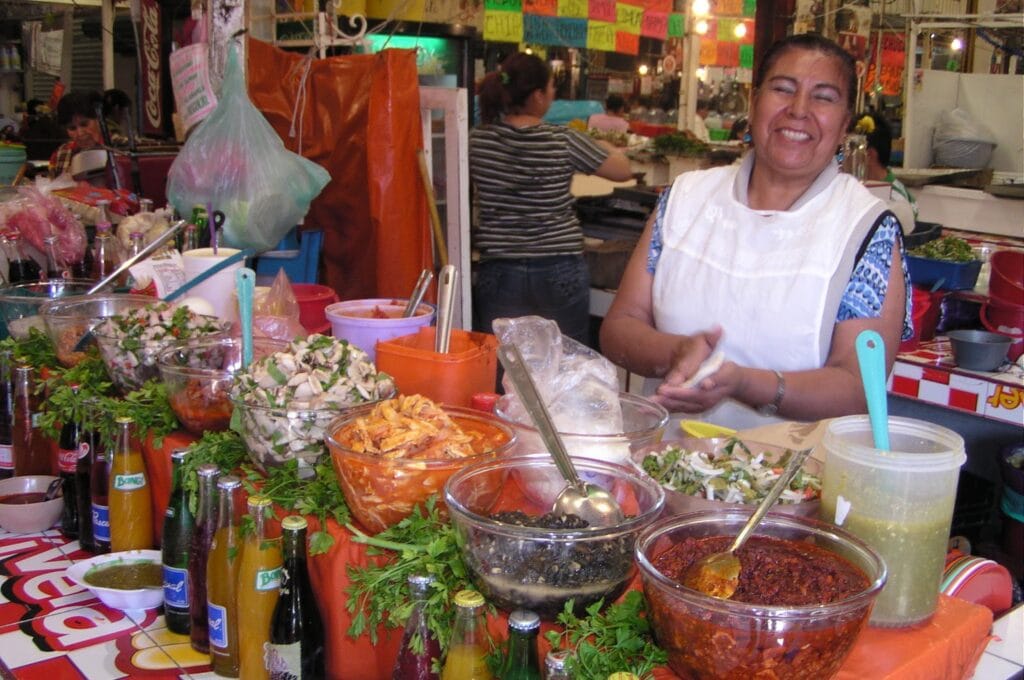
Mexican cuisine is incredibly diverse, with each region offering its own unique flavors, ingredients, and cooking techniques that reflect the local culture, climate, and history. In northern Mexico, the food is heavily influenced by ranching culture, with a focus on beef, goat, and flour-based dishes. Grilled meats like carne asada and cabrito (roast goat) are staples, and flour tortillas are more common here than the corn tortillas favored in other parts of the country. The northern region is also known for its cheese production, particularly in the state of Chihuahua, which contributes to dishes like queso fundido (melted cheese with chorizo or vegetables).
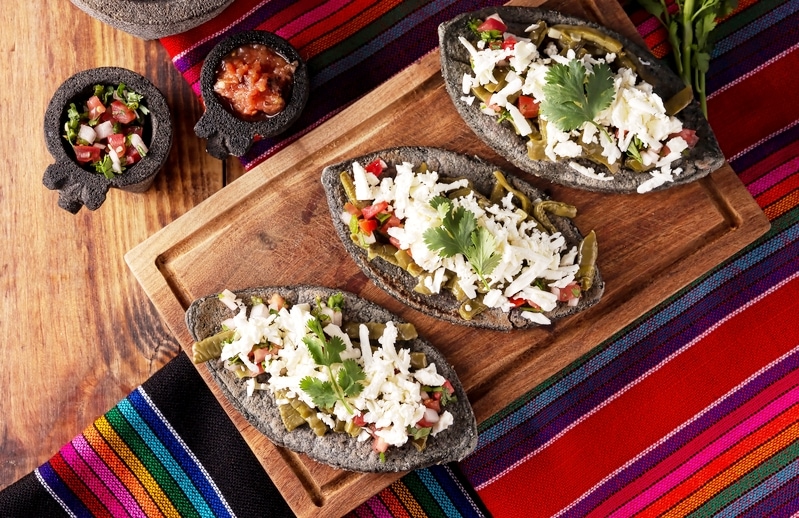
In contrast, the southern regions of Mexico, such as Oaxaca and the Yucatán Peninsula, showcase a wider array of indigenous ingredients and complex flavors. Oaxaca, often referred to as the “land of the seven moles,” is famous for its rich, intricate mole sauces, which combine chili peppers, chocolate, spices, and nuts. The region is also known for its use of native ingredients like corn, chili, and chocolate in dishes such as tlayudas (large, crispy tortillas topped with beans, cheese, and meat) and chapulines (fried grasshoppers).

Meanwhile, the Yucatán is distinguished by the influence of the ancient Maya civilization and tropical ingredients, with dishes like cochinita pibil (slow-roasted pork marinated in citrus and achiote) and sopa de lima (lime soup), highlighting a tangy and a sour orange based cuisine.

Central Mexico, including Mexico City, offers a fusion of culinary traditions from all over the country, with iconic street foods like tacos al pastor (pork tacos marinated with pineapple) and tamales readily available. This region is also home to pozole, a hominy-based soup, and barbacoa, a slow-cooked meat dish traditionally prepared in underground ovens. Each region in Mexico offers a distinct culinary experience, making the country’s food culture as varied as it is flavorful. Drinks or Bebidas in Mexico range from the delicious fruity or corn based Atoles to of course the usual tequila and mezcals.
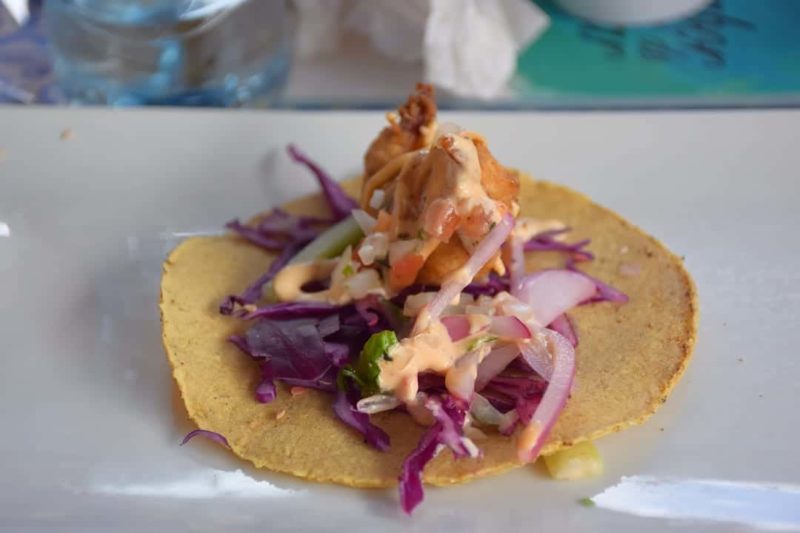
Cultural Norms
Mexico has a strong sense of tradition and community. Family is highly valued, and Mexican culture emphasizes politeness and respect in social interactions. It’s common for expats to experience a slower pace of life, which can take some adjustment for those used to a fast-paced, efficiency-focused lifestyle in the U.S. Many times we found that small shop keepers didn’t have change for example so they would simply tell you to take the item you wished to purchase and return later with the money – a very trusting state of affairs and demonstrates greatly the peaceful and kind Mexican people.
You should take the time to understand some Mexican holidays and Fiestas before you go. For example The Day of the Dead which is not Halloween.

Fiestas and Holidays
Mexico is known for its colorful festivals and holidays, such as Dia de los Muertos (Day of the Dead) and Independence Day. Participating in these celebrations is a great way to immerse yourself in the local culture. In Merida we could enjoy many cultural events such as traditional folk dancing outside of city hall

Practical Considerations: Banking, Taxes, and Legal Issues
Banking
Opening a bank account in Mexico as a foreigner requires a Temporary or Permanent Resident Visa. Popular banks for expats include BBVA, Banamex, and Santander. Many expats also maintain a U.S. bank account for convenience and ease of transferring money.
Taxes
As a U.S. citizen, you are required to file U.S. taxes even if you live abroad. However, Mexico and the U.S. have a tax treaty that can prevent double taxation. You may need to file Mexican taxes if you are working or conducting business in Mexico, and it’s advisable to consult with a tax professional familiar with both countries’ systems.
Driving
If you plan to drive in Mexico, your U.S. driver’s license is valid for short-term stays, but you’ll need a Mexican driver’s license for longer-term residency. Auto insurance from the U.S. typically does not cover driving in Mexico, so you’ll need to purchase Mexican car insurance.
Preparing for the Move
Packing and Shipping Belongings
Many expats choose to bring only essential items and purchase new furnishings in Mexico. Shipping large quantities of household goods can be expensive, and customs regulations may apply. It’s best to consult with a shipping company that specializes in international moves.
Health Preparations
Make sure your health insurance covers you abroad, or purchase a new policy that does. If you take prescription medications, bring a supply with you and ensure you can get refills in Mexico.
Settling In: Building a New Life in Mexico
We found in many of the communities we looked at settling in there were expat networks and groups that allowed you to join and learn about your new home, find Spanish lessons and introduce you to the customs and events of local areas.
Many Americans who move to Mexico find that they adapt quickly and enjoy the benefits of a lower cost of living, a rich cultural environment, and a slower pace of life. With careful planning and an open mind, your move to Mexico can be the start of an exciting new chapter.

Moving to Mexico as an American or in our case as Canadians or looking to retire in Mexico can be an exciting and rewarding experience. With its rich culture, affordable cost of living, and beautiful landscapes, it’s no wonder so many people are choosing to relocate to this vibrant country. By understanding the visa process, exploring different regions, and preparing for practical aspects like housing, healthcare, and taxes, you’ll be well-equipped to make the transition smoothly. Whether you’re seeking adventure, retirement, or a fresh start, Mexico offers countless opportunities for expats to build a fulfilling life.


Hey This is very helpful, especially the detailed information about each and every visa types, because we nomadics need to know the type of visa first, I am planning for the mexico in June 2017, I hope I can think any good one from this types and give it a shot and probably get the visa. Thanks again for the wonderful post, Cheers! 🙂
Very informative post, will really help with the overwhelming process of paperwork! Thanks for sharing!
Great tips for anyone wanting to move to Mexico.
Lovely tips!! its so informative this post 🙂 I love Mexico city … and i definitely move there ! Thanks for sharing with us
This is very informational. I was born in México so I believe I would automatically qualify for Dual Citizenship (from U.S.). I would love to live in there for half a year someday. It’s so true what you say though. My husband and I go to Mexico all the time. We felt very safe in Yucatan and Quintana Roo. I even forgot my purse at a restaurant and the employees looked for me down the street to return it! I was surprised. ????
Such a fantastic and helpful resource. If it’s possible, and I know it may not always be, but if possible I always recommend using a potential move as an excuse to take a holiday to the destination you’re considering for your move. That way you can scope out the place first hand, and know straight away if it’s for you 🙂
Happy Christmas!
Thank you for a very clear and comprehensive guide on what you need and what you have to do! I think it’s great that you stress from the start that Mexico is not what every says, i.e. apocalyptic!
This post is extremely informative and helpful! I’ve never been to Mexico but it is somewhere I have always wanted to go. I’ve lived abroad before and living in Mexico is something I would not rule out!
My sister has seriously been contemplating on moving to Mexico! This is great for her! Sharing!
These are great tips and an awesome resource for someone considering moving to Mexico. I hadn’t realized it was that complicated.
This post has so thorough information on how to move to Mexico. It is actually a guide for those seeking to move there. I will make sure to pass it on to friends who I know are planning something on these lines
What a great post!! Its so useful… I love your experience!! If i want to move to Mexico , i will know 🙂 Thanks for sharing with us
I lived in Texas for most of my life and have been to Mexico several times. There were a lot of small villages that I would definitely live in. This is such a great guide for those who are thinking of moving!
Mexico is lovely and I loved Cancun when I went there. This is very informative and liked it!!
it is so useful information for those who are thinking of moving in Mexico. Great post.
What a detailed account! I’d love to spend some quality time in Mexico, but I’m afraid these rules don’t apply to me (Russian passport here). But there are a couple of people I know who’ll appreciate this info, so I’m forwarding it to them 🙂
Actually Anna these rules apply to everyone regardless of country – I just wrote this from a Canadian perspective so the money detailed is in Canadian dollars. I know many Russians, Swedes, Norwegians, Italians and so on who have moved to Mexico using the same visas these are available internationally. You just have to find a Mexican Consulate/Embassy and apply.
Such an informative and useful article for those looking to gather important information.
Great tips! I planned on moving to Mexico to study but got swayed not to due to how high crime rate is there.
don’t let the bad PR sway you – there are simply loads of safe places in Mexico that are better, easier and cheaper to live in than many of the major cities world-wide. I heard it all before I moved to Mexico but was really impressed by the safety of the country. I also met many ex-pats, solo traveleers who felt safer in Mexico than they did where they came from. Just do you homework and you are good to go.
Going to Cancun in April! See what it’s like, maybe I’ll move there! Thanks for all the info!
Cancun is a little touristy for my taste but I enjoy it for a visit – Playa del Carmen is lovely but you have to be careful on the plus side there are tons of rentals to give either place a try for a while. They may also be a tad cheaper than the gulf side funnily enough because there is way more people so way more inventory with a rental property.
This was very informative, thank you. More people should be more open about moving to beautiful places like Mexico!
Great guide! Mexico is unique, their culture is so fascinating. Thanks for the post.
Mexico is such an amazing place to be in! I’ve been here for three full years since last month and everyday I’m grateful to wake up in such a beautiful city..
Mexico is a beautiful place. I have a few friends living in Mexico. It so different from the US. I’ve been I few times and every time I go I discover something new.
Mexico really awesome place. I love Mexico. Actually, Mexico culture is different. You share the information is really awesome. Helpful blog. Thanks!
Great write up! Perhaps you can clariofor me a financial requirement. If you must have $30k in an account for the past 12 month, do you also need to be drawing the $3000 per month from it or another source?
We are not retired yet but wish to quit and leave early. If we can show $250k in an account BEFORE we’ve even cashed out our pensions and sold our home, could we begin the process to get the retirement visa ??
I will be funding our own retirement so there is no money at the moment coming in the form of pension as I’m working….
you don’t need both an income per month and investment money all you need is one or the other. So you should be fine with what you have it is plenty.
Mexico really awesome place. Lot’s of moving company are there in this area but which company are the best for moving. Most of the companies are higher fees. So don’t hire the people moving company. But you shared the right information about moving across the country. I am happy with your blog. Thank you so much.
I want to get out of Kitchener Ontario Canada as soon as I can. What do I do. I have the finances. I don’t care which city I go to in Mexico.
Contact the Mexican Embassy https://embamex.sre.gob.mx/canada/index.php/en/ they are in Ottawa and you can begin the process to get your visa for MExico. It’s not difficult really just paperwork, you can then decide where in Mexico you want to settle. I highly recommend looking up Facebook pages or groups of ex-pats in Mexico and asking some questions to see where you would like to live.
Bummer, apparently I fall 500 per month short on tax free money…I’ll have to see what I need just living on my boat…
I have heard tales of Yachties living very comfortably on their boats at a much lower cost than land folks so go for it.